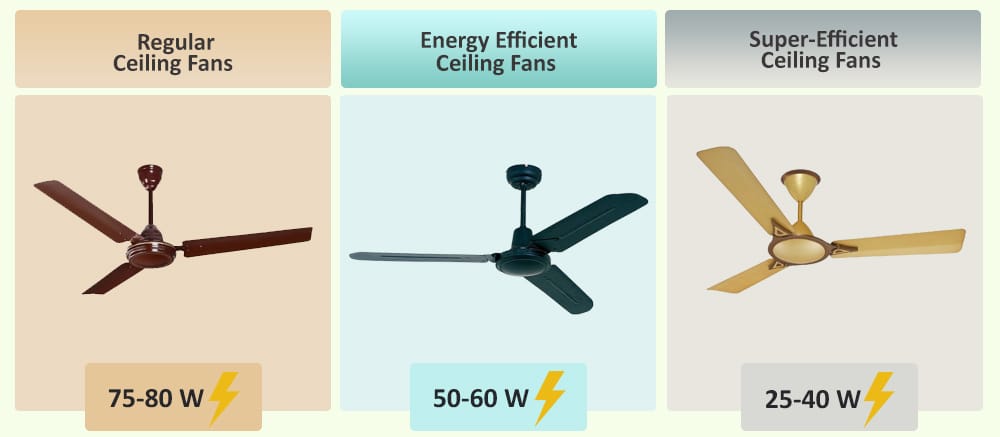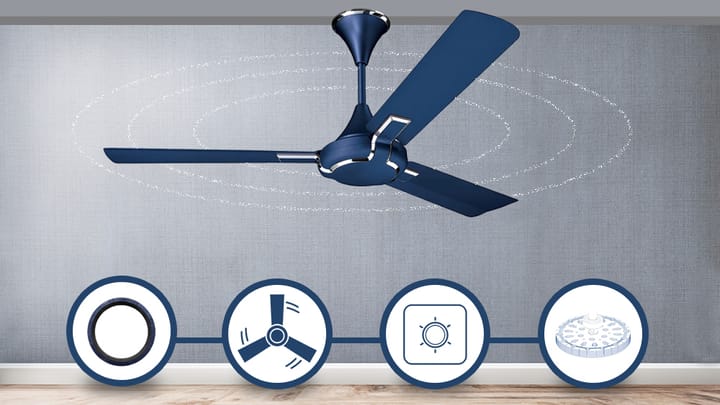Why should Super-efficient fans have a blockbuster sale?
The market for super-efficient fans is experiencing a significant transformation. There is a huge scope to promote super-efficient appliances, particularly ceiling fans, in India.

By: Dr. Sandeep Garg, Ashish Jindal, Anurag Bajpai, Shikha Saxena, Syed Faraz
What are Super-efficient fans?
Super-efficient fans are the BLDC fans, i.e., the fans that utilize advanced motor technology and improved fan blade designs to consume less power than conventional fans. BLDC Ceiling fans are getting famous day by day in the ceiling fan market, with their energy-saving and optimum speed control advantages. These fans are 5-star rated, with service value of 8, and regular fans are 4, 3, 2, and 1-star rated fans. Depending on the type of motors they use, super-efficient fans may also be referred to as Switch Reluctance fans or Synchronous Motor fans.
According to the Bureau of Energy Efficiency (BEE), super-efficient fans consume 25–40 watts of electricity with no compromise in air delivery, as compared to conventional fans.

Source: Bureau of Energy Efficiency (BEE)
Role of Bureau of Energy Efficiency (BEE) in transformation from conventional to super-efficient fans
The Bureau of Energy Efficiency (BEE) plays a key role in driving the transition from conventional fans to super-efficient models. The BEE star rating system helps consumers understand the energy efficiency and performance of a fan before purchasing it. As a regulatory authority, BEE establishes and enforces energy efficiency standards for various appliances, including ceiling fans.
BEE has proposed the Super Efficient Equipment Programme (SEEP) for Ceiling Fans, given that such fans are sold in huge volumes. SEEP is a program designed to bring accelerated market transformation for super-efficient appliances by providing financial incentives at critical points of intervention. Under this program, the ceiling fan has been identified as the first appliance to be adopted.
SEEP for ceiling fans aims to make fans about 50% more efficient than most fans on the market. This involves providing a time-bound incentive to fan manufacturers, encouraging them to produce super-efficient (SE) fans and sell them at a discounted price. The goal is to introduce super-efficient 35W ceiling fans, which use less energy compared to the usual 70W-rated ceiling fans commonly sold in the Indian market.
The Bureau of Energy Efficiency mandated on July 1, 2022 that, ceiling fan to sell only star rated fans and the products had to be prominently labeled at the point of sale.
Star Rating Chart for Ceiling Fans, based on the fan blade size
Based on the blade size, fans need to meet the minimum performance requirement to be eligible for star ratings. To evaluate the performance of a ceiling fan, a metric called Service Value is used by BEE.
A fan’s service value means the amount of air delivered per minute per wattage of energy consumed. Fans with a service value greater than 4 are given a 5-star rating.
Fan with a blade sweep of 1200 mm:

Source: Bureau of Energy Efficiency (BEE)
About 40 million ceiling fans are sold in India every year, out of which only 2 to 3% of fans are BLDC. This sale is mostly concentrated in urban areas and primarily in the metro cities. However, due to the Standards & Labelling programme's voluntary nature, star-rated models were hardly being sold before 2023. [S&L helps consumers understand the energy savings and cost-saving potential of various appliances and aims to help consumers make informed choices based on each appliance's energy efficiency performance.]
Scope & Opportunities for new brands in the Market
The market for super-efficient fans is experiencing a significant transformation, with a shift from basic utilities to items now seen as status symbols by savvy consumers. There is a huge scope to promote super-efficient appliances, particularly ceiling fans, in India. In response to the increasing demand for energy-efficient and eco-friendly solutions, there exists a substantial opportunity for new brands in the market.
New brands in the ceiling fan market have a great opportunity to succeed by focusing on what customers want.
- By prioritizing innovative design, energy efficiency, and smart technology integration, these brands can differentiate themselves and attract consumers.
- Offering competitive pricing, reliable after-sales service, and building a strong brand reputation are also significant for success.
In India, conventional fans generally use induction motors and consume about 75W at top speed. While super-efficient (SE) fans, using BLDC motors and improved fan blade design, use 28-35W at top speed. Manufacturers of these super-efficient fans in India include both newer players such as Atomberg, Superfan, Jupiter, Halonix Technologies, and Oceco, as well as traditional players such as Havells, Orient Electric, Crompton, and Usha.
We estimate that the total addressable market for SE ceiling fans in India is about 476 million, which is, the total potential demand for SE ceiling fans in the residential sector and it comprises:
i. the entire existing stock of ceiling fans (potential replacement purchases) of about 410 million, and
ii. the unfulfilled demand (potential first-time purchases) of about 66 million
The star-labelled ceiling fans comprise just 9% of annual ceiling fan sales. Of this, the share of the SE ceiling fans is even smaller, with roughly 1 million units being sold annually.

Source: Council of Energy, Environment & Water (CEEW)
The benefits and co-benefits of opting super-efficient fans are noteworthy:
- The primary benefits of SE fans are energy savings and the resultant monetary savings. The above analysis shows an annual energy saving potential of nearly 40 terawatt-hours (TWh) of electricity if the entire addressable market is selected. This is equivalent to about 15% of India’s residential electricity consumption (MoP 2019).
- There are also substantial co-benefits associated with energy savings. These include the suspension of investments in energy generation capacity, necessary to meet the rising energy demand.
There is a promising scope for global market expansion as the demand for energy-efficient ceiling fans extend beyond the borders of India. This international appeal creates opportunities for new brands to establish a global presence and meet the varied preferences of consumers worldwide. We believe the transition from conventional to super-efficient BLDC fans will form the next phase of growth for the industry in the wake of deep under-penetration of energy saving fans in India and the government’s push to optimize power consumption.




